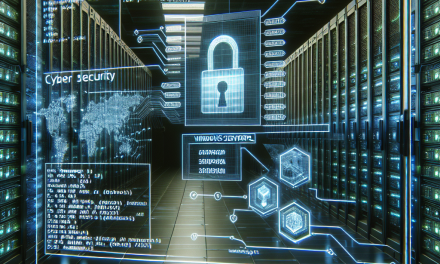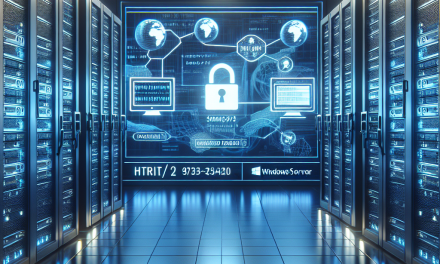Introduction
As the Internet of Things (IoT) continues to expand, integrating IoT devices with Windows Server environments has become increasingly common. However, with this integration comes the heightened risk of security vulnerabilities. IoT devices often operate with minimal security controls, making them attractive targets for cyberattacks. In this article, we explore best practices and strategies to enhance the security of Windows Server IoT integrations, ensuring that both data and devices remain protected.
Understanding the Threat Landscape
Before diving into security practices, it’s essential to understand the specific threats that IoT devices can pose to Windows Server environments:
- Unauthorized Access: Many IoT devices have weak default credentials, making them easy targets for unauthorized access.
- Data Breaches: Unsecured devices may transmit sensitive data over the network without encryption.
- Botnets: Compromised IoT devices can be turned into botnets, launching distributed denial-of-service (DDoS) attacks against target systems.
Best Practices for Securing IoT Integration with Windows Server
1. Network Segmentation
One of the most effective ways to secure IoT devices is to segment them from the main corporate network. By creating isolated network segments:
- Restrict Access: Only allow necessary communication between IoT devices and other critical systems, minimizing the attack surface.
- Monitor Network Traffic: Use firewalls and intrusion detection systems to monitor traffic and detect anomalies.
2. Implement Strong Authentication and Access Controls
Ensure that only authorized users and devices can access your Windows Server and IoT devices:
- Change Default Credentials: Always change the default username and password on IoT devices.
- Use Multi-factor Authentication (MFA): Implement MFA to provide an additional layer of security for access to sensitive systems.
3. Regular Software Updates and Patch Management
Keeping systems and devices updated is crucial in mitigating vulnerabilities:
- Automatic Updates: Enable automatic updates whenever possible.
- Regular Audits: Conduct regular reviews of both IoT devices and Windows Server for available patches and security updates.
4. Data Encryption
Ensure that data transmitted between IoT devices and Windows Server is encrypted:
- Use VPNs: Establish a Virtual Private Network (VPN) for secure communication.
- Utilize TLS/SSL: Encrypt data in transit using Transport Layer Security (TLS) or Secure Sockets Layer (SSL) protocols.
5. Device Management and Monitoring
Implement a robust device management strategy:
- Inventory Management: Keep an up-to-date inventory of all IoT devices connected to your network.
- Real-time Monitoring: Use monitoring tools to observe IoT device behavior and identify unusual patterns or vulnerabilities.
6. Conduct Regular Security Assessments
Regular security assessments can help identify potential vulnerabilities:
- Penetration Testing: Simulate attacks on the system to gauge its defenses.
- Vulnerability Scanning: Regularly scan both IoT devices and Windows Server for known vulnerabilities and misconfigurations.
7. Educate Employees and Users
Human error remains one of the significant factors contributing to security breaches. Ensure that all staff are trained:
- Security Awareness Training: Conduct training sessions on the importance of IoT security and best practices for maintaining it.
- Phishing Simulations: Regularly run phishing simulation exercises to teach users to identify suspicious activities.
Conclusion
As IoT devices proliferate, the integration of these devices with Windows Server environments will continue to grow. However, without a robust security framework, organizations risk exposing themselves to significant vulnerabilities and cyber threats. By implementing the best practices outlined in this article, businesses can significantly enhance the security of their IoT integrations, safeguarding both their critical data and the integrity of their systems.
Investing in a proactive security strategy will not only protect your assets but also instill confidence in clients and stakeholders that their data is secure. Remember, security is not a one-time effort; it is an ongoing process that requires vigilance and adaptability to stay ahead of evolving threats.





